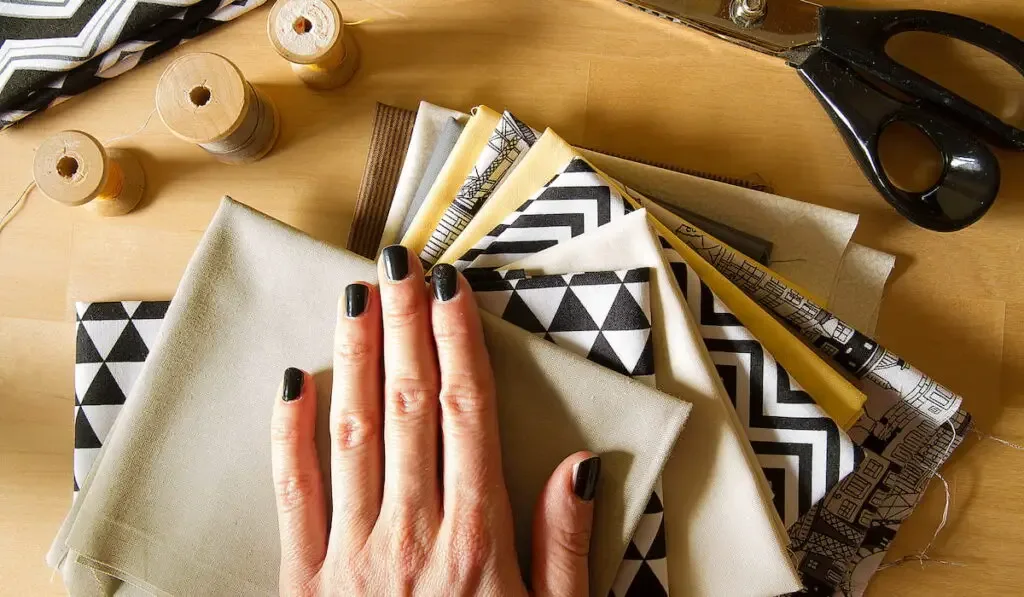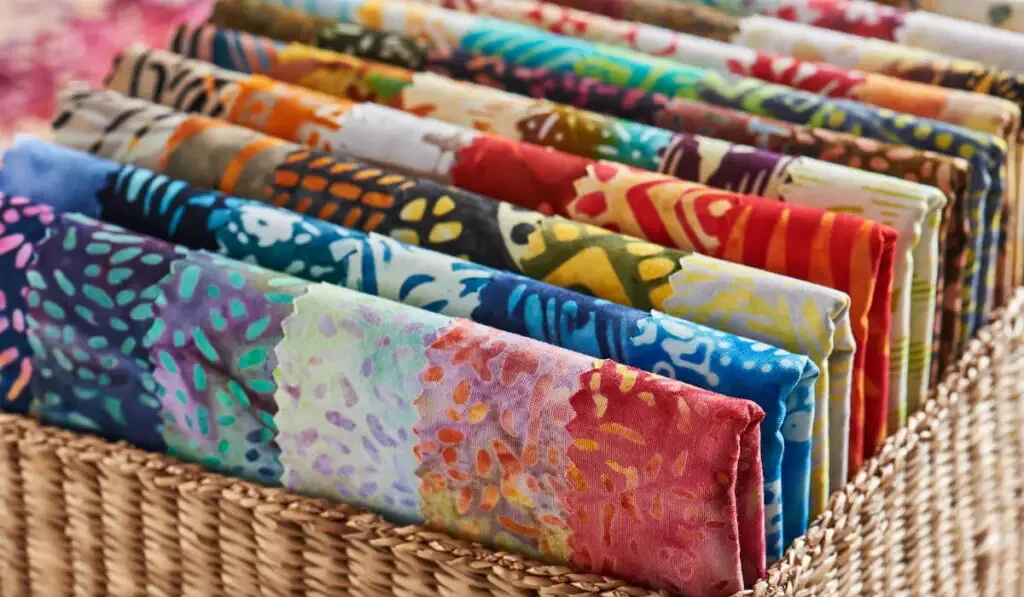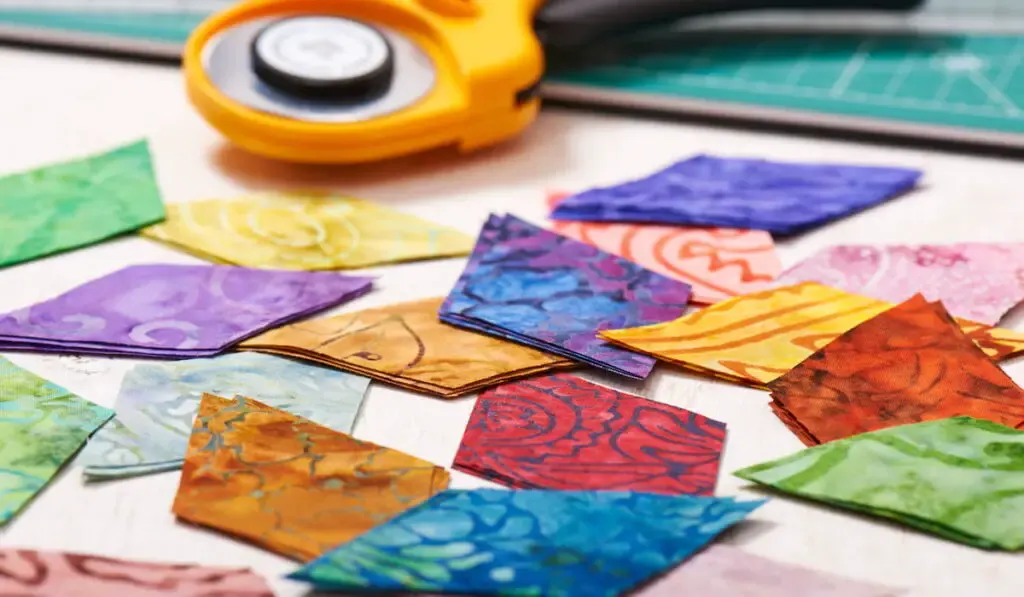What is Prewashing?
Prewashing of quilt fabric is the laundering of the fabrics before putting them to use in a quilt project. This practice has traditionally been done, but since it isn’t necessary or mandatory, not everyone prewashes their fabric.
Whether you choose to prewash or not to prewash your fabric, there are advantages and disadvantages to both sides.
Should you prewash quilt fabric? What if you forget to prewash? This article will give you a detailed look at both instances and what you need to know when considering if to prewash or not.

Should You Prewash Quilt Fabric?
Prewashing has always been a tradition for quilters, and most people do it for many reasons. However, it is not always necessary, as it has several pros and cons associated with it.
So what are these factors to consider before prewashing?
Advantages of Prewashing
- First, prewashing prevents bleeding. Ever mix fabrics with highly contrasting colors in the washing machine and seen the horrific outcome? Well, prewashing fabrics will by far minimize the seeping of dyes from their respective fabrics into other fabrics. Although contemporary fabrics are often colorfast, meaning their dyes do not bleed out when washed, vibrant colors like blues, purples, and reds are the usual suspects that will often seep into other fabrics when mixed in a washing machine. Therefore, if you are considering quilting fabrics with such vivid colors, it is most advisable to prewash them.
- Prewashing removes the manufacturing chemicals. Fabrics are always treated with a couple of chemicals while in the factory to help keep them stiff and have that bright look. If directly quilted, these chemicals can have an itchy impact on sensitive skin, and can even cause rashes in severe cases. However, prewashing helps remove this risk and helps your fabric get more relaxed, aiding in easier quilting.
- Prewashing also helps to shrink your fabrics before putting them to work, respectively reducing the shrinking on the final product when washed after the project. When a second wash is done, the resulting shrinking should be minimal and uniform in all the fabrics.
Disadvantages of Prewashing
However, there is a bad side to prewashing.
- Still, on shrinking, this could be a bad thing for your fabrics. When fabrics shrink due to pre-washing, the shrinking happens from all the sides of the fabric in anywhere from ¼ an inch to a few inches, all based on the type of the relative fabric. Therefore, if you are for the idea of prewashing, you should consider ordering more fabric than what is needed to complete your project. In such an instance, there is the likelihood of material waste and a decrease of the much sought-after crinkle effect. Before pre-washing, therefore, you should first consider if you want your fabric to look instantly crinkled before quilting or you want it to look crinkled after quilting.
- Prewashing fabrics often leads to frayed edges. When you wash fabric with cut edges, the outer fabrics often stay loose and are most likely to fray out, and you will need to get rid of those pesky hanging threads before proceeding with the quilting project when you need to.
- Small pieces do not need prewashing. Smaller fabric pieces do not have the necessary surface area to face the pending frays and shrinks associated with prewashing. However, if you prefer washing smaller fabrics, always toss them in a meshed laundry bag to avoid tangled thread balls when retrieving them.
- Lastly, prewashing is time-consuming. Ideally, there are many time-consuming activities related to prewashing, from the washing, drying, ironing, starching, and trimming of frays and loose threads all takes time.

Post Wash Tips
If you find it necessary to wash your fabrics before quilting, there are a few things you should do before working on the fabrics.
- First, trim the frayed threads. Frayed threads will always give your fabric a messy and ugly look. Before working on them, therefore, use a rotary cutter or a pair of scissors to trim them off.
- Gently press the fabric to iron out the wrinkles to help you figure the precision measurements when working on the fabric.
- Lastly, starch the fabric to help the fibers retain their crispness and rigidity, which will help ease the cutting and sewing processes when quilting.
What if You Forget to Prewash?
If you forget to prewash your quilting fabric before using it, you don’t have to worry about a thing at all. People like to prewash, but you can choose not to pre-wash the fabric at all. This will ensure keeping the fabric even and not putting too much pressure on the stitches.
If you are worried about mixing the pre-washed fabrics and those that are not pre-washed, you should consider hand washing them. This, too, will reduce the strain on the stitches. For a detailed look at this, failing to prewash fabric has both advantages and disadvantages.
Advantages of Failing to Prewash
- Saves time. Failing to prewash can be a crucial time-saver, especially when you are on a deadline, and all you want to do after purchasing your quilt fabric is do the necessary trims and cuts of the fabric and hop onto the project. This means that you will edge out the time-consuming processes like washing, drying, ironing, trimming, and even starching. Either way, quilters often plan their quilting steps and most often forget the prewashing stage, which is fine, but you can never go back to that stage after you start cutting the fabric.
- Similarly, you can proceed to do your project right away. You can intentionally leave out the prewashing stage for you to hop on to the quilting project.
- Some quilters like the chemicals in fabrics. Failing to prewash, therefore, means that the chemicals in the fabrics are preserved, helping maintain the crispness and hardness in every piece of the fabric, making it easy to cut and sew besides avoiding wrinkles on the fabric.
- For a refined vintage crinkle, you will have to avoid prewashing, but rather aim for after washing of completed quilts. Prewashing fabrics means that they will shrink and crinkle up, which will even make it harder to quilt, but washing after quilting will see to it that the shrinks will be in line with the stitches done, helping promote the nice and uniform crinkles for that cozy, puffy, fluffy, and cuddly quilt. Therefore, if you want nice crinkles on your quilt projects, you should avoid prewashing fabrics.
Disadvantages of Failing to Prewash
- Higher risk of bright dye bleeding. If you fail to prewash your fabrics, there is a higher risk of brightly colored dyes like reds and purples bleeding and staining the neutral colors in the quilt project. If you suspect a risk of bleeding when you want to do an after-wash, there is nothing to worry about. Chemicals like Retayne help fabrics hold on to their respective dyes. Therefore, if you want to wash fabrics with possible dye leaks, a few tablespoons of Ratayne will help.
- Higher risk of unwanted shrinking. In an instance you use un-prewashed fabrics with different shrinking abilities in one quilt project, there is a higher risk of your final product getting a little too wonky on both the inner quilt and the edges. Therefore, if you prefer not to prewash, you should use a consistent fabric to avoid this risk.

Other Reasons to Avoid Prewashing
If you are using fabrics with predefined cut sizes, then you should avoid prewashing them to maintain your pre-cut shapes and sizes. Prewashing leads to the shrinking of material, which will greatly distort your fabric. At times, you may purchase fabric pieces that are exactly the sizes you need to perform certain tasks such as a block of the month themes. Prewashing the fabrics mean that they are going to shrink and you won’t be able to cut out the required fabric pieces to do the quilt.
You can also at times find it necessary to avoid prewashing due to the unnecessary frays associated with prewashing. However, if you find it necessary to prewash, you can use pinking shears, zigzag, or serge the loose edges before prewashing.
Conclusion
Whether you do it intentionally or you just forgot to do it, failure to prewash quilting fabric should not be a major concern for alarm when doing your quilting. Besides, depending on the project, some quilts often look prettier when you don’t prewash their fabrics, as compared to how it would look like if you did.
Most people nowadays do not prewash. Whether you want to prewash or not, there isn’t much difference.
Resources
- https://www.cottoneerfabrics.com/to-prewash-or-not-to-prewash/
- https://coloradocreationsquilting.com/blogs/blog/8-top-reasons-why-quilters-dont-need-to-prewash-fabric
- https://suzyquilts.com/should-you-prewash-fabric-before-quilting/
- http://www.iloveyousew.com/what-to-do-when-you-forget-to-pre-wash-high-contrast-colored-fabrics-in-a-quilt/
- https://silverbobbin.com/should-i-wash-fabric-before-sewing
- https://mysassynotions.com/2015/01/13/the-pros-and-cons-of-pre-washing/
